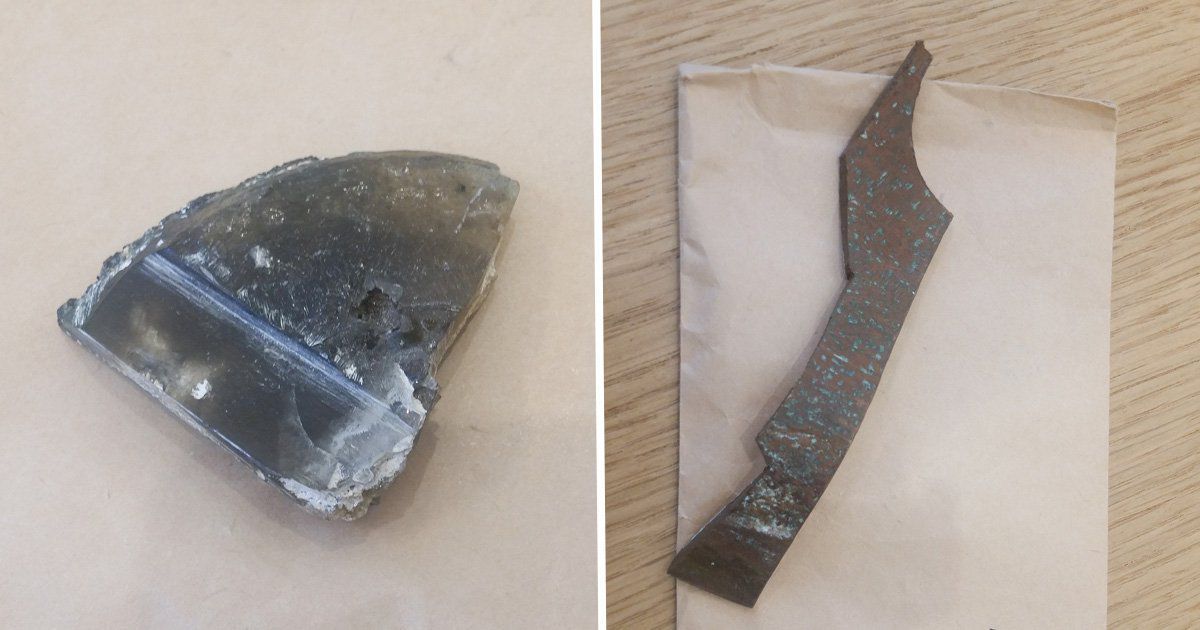
I-Team: Race Is On to Solve the Mystery of Unknown Materials
by George Knapp and Matt Adams October 31, 2018 (lasvegasnow.com)
• For years, the Pentagon has secretly studied the seemingly impossible abilities of unknown craft captured in military videos. Scientists now want to know if the materials used in these UFOs allow them to do what they do. They’ve been collecting so-called “metamaterials”, especially any associated with crashed UFOs, from all over the world.
• Many material samples come through Tom DeLonge’s ‘To The Stars Academy’s “A.D.A.M.” Research Project. “We have multiple samples from multiple sources, a wide range of variety and integrity,” says Luis Elizondo.
|
• One of the secret studies was carried out by BAASS (Bigelow Aerospace Advanced Space Studies), a Las Vegas operation hidden within Bigelow Aerospace, under contract with the Defense Intelligence Agency (DIA) to study metamaterials as well as futuristic technologies. Last year, the New York Times reported that a sample of metamaterial was secretly stored at Bigelow aerospace. Managers of the BAASS program told George Knapp’s “I-Team” news team in Las Vegas that while they are familiar with some of the metamaterial samples, none were ever stored in Las Vegas.
• A type of metamaterial studied by Dr. Hal Puthoff with the Institute for Advanced Studies (in Austin, TX) was “… a multilayered bismuth and magnesium sample. Bismuth layers less than a human hair. Magnesium samples about 10 times the size of a human hair, supposedly picked up in the crash retrieval of an advanced aerospace vehicle. It looks like it’s been in a crash.” Puthoff and his colleague Dr. Eric Davis are on the cutting edge of attempts to identify an assortment of bits and pieces that are seemingly beyond anything we can create.
• Astrophysicist Dr. Jacques Vallee has been analyzing metamaterials since the 80s, often using the technical expertise of Stanford University and Silicon Valley to unravel unknown samples acquired from all over the world. Vallee pointedly steers clear of any military funding and he’s shared his findings at public conferences.
LAS VEGAS – A global scramble is underway to identify and perhaps replicate unidentified mystery materials that have been collected at multiple sites around the world.
A few of the samples have defied analysis by leading scientists, who say they don’t know how the material was engineered, or why, or by whom?
Some of the metamaterial was allegedly collected in connection with UFO incidents, which gives the whole endeavor an otherworldly glow.
For years, the Pentagon secretly studied the seemingly impossible abilities of unknown craft captured in military videos.

Scientists now want to know if the materials used in these mystery aircraft allow them to do what they do. For years, one of the secret studies was carried out by BAASS (Bigelow Aerospace Advanced Space Studies), a Las Vegas operation hidden within Bigelow Aerospace.
Documents first reported by the I-Team show that BAASS landed a contract with the DIA (Defense Intelligence Agency), and one of the objectives was to study so called metamaterials, as well as futuristic technologies.
“It was a multilayered bismuth and magnesium sample. Bismuth layers less than a human hair. Magnesium samples about 10 times the size of a human hair, supposedly picked up in the crash retrieval of an advanced aerospace vehicle. It looks like it’s been in a crash,” said Dr. Hal Puthoff, with the Institute for Advanced Studies during a presentation in Las Vegas.
In June, physicist Hal Puthoff came pretty close to saying that the weird wedge of metamaterial came from a crashed saucer, but he can’t know for sure. Puthoff and his colleague Dr. Eric Davis are on the cutting edge of attempts to identify an assortment of bits and pieces that are seemingly beyond anything we can create.
This one sample is engineered in layers thinner than microns, through a process unknown on earth, and for a purpose we can only guess.
“Nowhere could we find any evidence that anybody ever made one of these when we talked to people in the materials field who should know, they said we don’t know why anybody would want to make anything like this,” Dr. Puthoff said.
FAIR USE NOTICE: This page contains copyrighted material the use of which has not been specifically authorized by the copyright owner. ExoNews.org distributes this material for the purpose of news reporting, educational research, comment and criticism, constituting Fair Use under 17 U.S.C § 107. Please contact the Editor at ExoNews with any copyright issue.
A.D.A.M.” Research Project, Austin TX, Bigelow Aerospace Advanced Space Studies, Dr. Hal Puthoff, Dr. Jacques Vallee, George Knapp, I-Team, Institute for Advanced Studies, Las Vegas, Luis Elizondo, metamaterials, Pentagon, The New York Times, To the Stars Academy, Tom Delonge
Viktor Golubic
My hunch is that the Bi-Mg sample was created as a layered slag that accumulated as a ring layer on the large smelting vats’ container lip during the extraction process of bismuth. Basically it was eventually chipped off the edge …after multiple vats had been processed in the same container equal to the number of layers present.
The piece has a radius of curvature that can be determined if it matches that of the typical smelting vat circumference/diameter.
In order to achieve fine debismuthizing of lead bullion, the effects of temperature with the addition of calcium and magnesium on the bismuth during the removal process from lead is utilized.
During that process bismuth is formed on the surface and scaled off…but Mg and Ca are added … to the vat to initiate the process … I believe Ca was also detected in the piece and this can’t be just a coincidence.